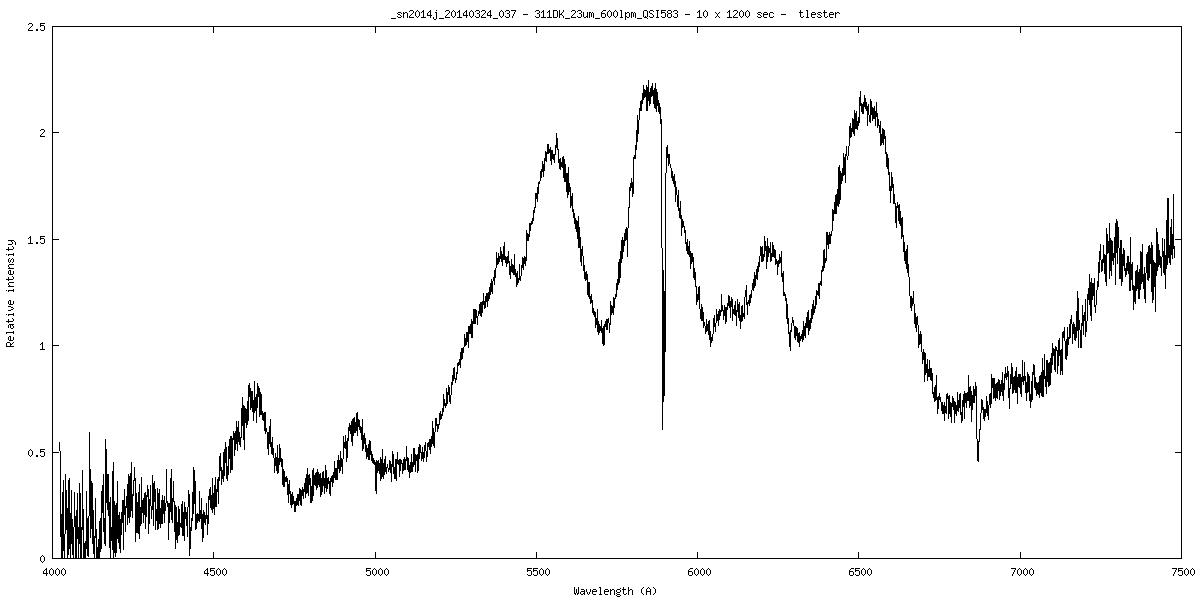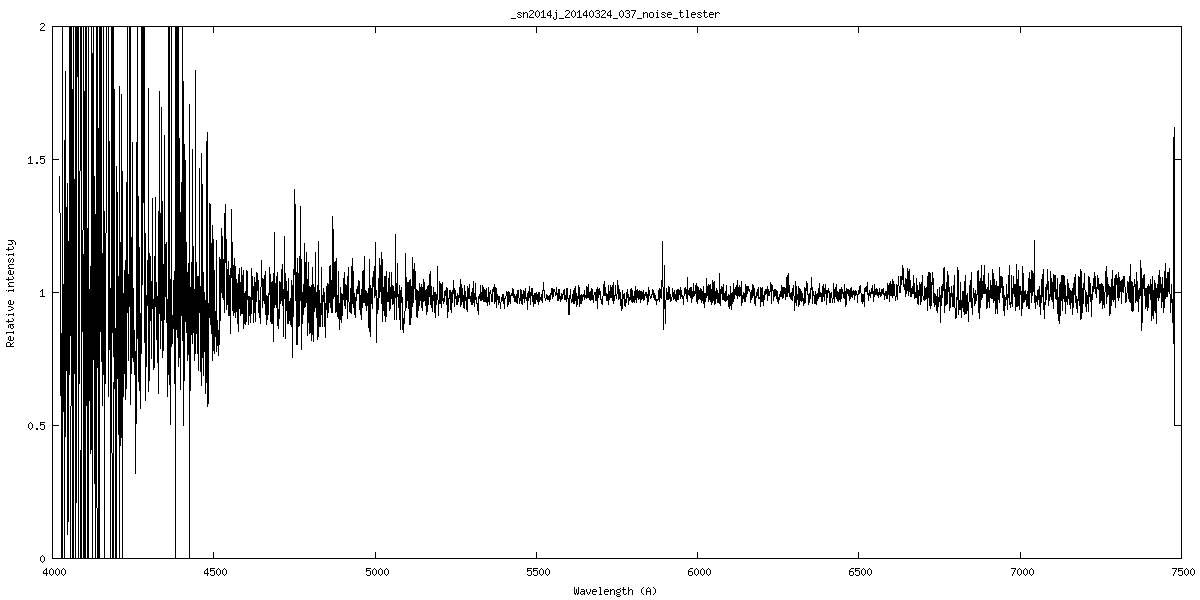Page 1 of 1
SNR calculation in ISIS
Posted: Sun Oct 26, 2014 11:05 am
by Robin Leadbeater
Error analysis in spectroscopy is one area where we still lag behind the professionals
The optimal binning routine used in IRAF also generates an estimate of SNR at each bin position. (based on the variability between pixel values in each bin). It could be useful to have this information generated in ISIS too, either as a separate SNR profile or perhaps as a single mean value over a selected wavelength range.
Cheers
Robin
Re: SNR calculation in ISIS
Posted: Sat Nov 01, 2014 6:34 pm
by Tim Lester
Robin,
I got to thinking about what could be done to estimate noise with the tools we have.
I think there is a straightforward method using ISIS as it stands to get both a visual plot of the noise and a quantitative estimate.
Lets say I have acquired 10 shots for an object.
I take the 10 shots and divide them into two sets: 1,3,5,7,9 and 2,4,6,8,10
I process each set separately with the same tungsten cal, wavelength reference and response curve as was used for the normal processing of the full set of 10.
I then divide the profile from set1 by the profile from set2 i.e. normalize profile1 by profile2
The resultant profile has an average value of 1 with noise that is 2 times larger than noise of the normally processed set of 10 (if it had been normalized with a perfectly noise free profile).
To make things convenient I then divide this "noise" profile by 2 and add 0.5. This gives a profile that can be used with the ISIS FWHM tool to get the SNR for any region along the profile.
As an example here is the normally processed spectra and my resultant "noise" profile for SN2014J.

- _sn2014j_20140324_037.png (11.59 KiB) Viewed 4606 times

- _sn2014j_noise_tlester.png (10.11 KiB) Viewed 4606 times
Is my logic correct?
Tim
Re: SNR calculation in ISIS
Posted: Sun Nov 02, 2014 10:59 am
by Robin Leadbeater
Hi Tim,
I like it

When there has not been any clear continuum to measure the SNR in, I have on occasion resorted to reducing the individual exposures and measuring the variability between them but this is a simpler way of doing it. I suspect the uncertainty of the result in a single bin could be quite high depending on the number of exposures but the mean over a wavelength region should be a good estimate. In any case I suspect the same applies to the IRAF measurement on a single exposure, particularly in our case where typically spectra taken with a small aperture do not cover many rows. I found one thing to watch for when looking at the variability between exposures is any wavelength shift between them. If the spectrum has many sharp lines, the shifts translate into variability between exposures in any one bin. (Like your noise spike at the Na D line perhaps) Grouping alternative exposures as you suggest and perhaps using the ISIS wavelength alignment tool would probably take care of this.
Cheers
Robin
Re: SNR calculation in ISIS
Posted: Sun Nov 02, 2014 12:31 pm
by Andrew Smith
Tim, Robin, I fully support getting a rigorous approach to measuring SNR in our spectra and have ask for such in ISIS before. I assume, what we want is a robust estimate of the noise in the signal strength at each wave length. ( I am assuming we are already getting an estimate of the calibration error in ISIS but not in the resolution.)
So to Robin's point on using the image to image variation and the possibility of noise due to spectral shift is this to be included or not? I suspect that would depend on how the images are combined e.g mean v median with or without shifts. If it impacts the level then in my view it should included.
I also think we need a mathematical analysis to justify the estimate provided. I have not yet tried to do this for Tim's protocol, and while it looks interesting I would like to see how it relates to other (more traditional) methods. I will give this some thought but if you have done it Tim please post the results.
To work at the limits, as for example Christian's recent post on spots, we need robust measures of SNR in amplitude, calibration and resolution.
Regards Andrew